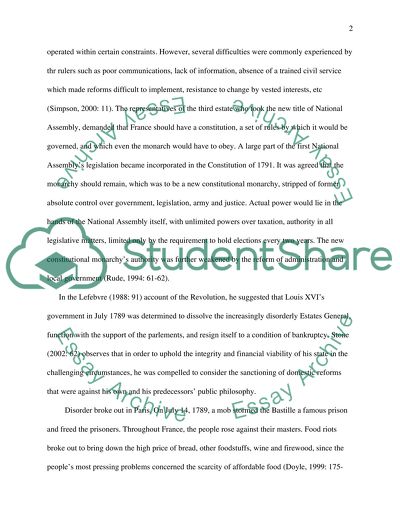Cite this document
(The French Revolution Assignment Example | Topics and Well Written Essays - 3000 words, n.d.)
The French Revolution Assignment Example | Topics and Well Written Essays - 3000 words. Retrieved from https://studentshare.org/history/1544195-account-for-the-failure-of-the-experiment-in-constitutional-monarchy-between-1789-and-1792
The French Revolution Assignment Example | Topics and Well Written Essays - 3000 words. Retrieved from https://studentshare.org/history/1544195-account-for-the-failure-of-the-experiment-in-constitutional-monarchy-between-1789-and-1792
(The French Revolution Assignment Example | Topics and Well Written Essays - 3000 Words)
The French Revolution Assignment Example | Topics and Well Written Essays - 3000 Words. https://studentshare.org/history/1544195-account-for-the-failure-of-the-experiment-in-constitutional-monarchy-between-1789-and-1792.
The French Revolution Assignment Example | Topics and Well Written Essays - 3000 Words. https://studentshare.org/history/1544195-account-for-the-failure-of-the-experiment-in-constitutional-monarchy-between-1789-and-1792.
“The French Revolution Assignment Example | Topics and Well Written Essays - 3000 Words”. https://studentshare.org/history/1544195-account-for-the-failure-of-the-experiment-in-constitutional-monarchy-between-1789-and-1792.


